Dagstuhl Seminar 19101
Analysis, Design, and Control of Predictable Interconnected Systems
( Mar 03 – Mar 08, 2019 )
Permalink
Organizers
- Kunal Agrawal (Washington University - St. Louis, US)
- Enrico Bini (University of Turin, IT)
- Jens Schmitt (TU Kaiserslautern, DE)
- Giovanni Stea (University of Pisa, IT)
Contact
- Michael Gerke (for scientific matters)
- Susanne Bach-Bernhard (for administrative matters)
Impacts
- Improving Multiprocessor Real-Time Systems with Bursty Inputs under Global EDF using Shapers : article in 2019 IEEE 22nd International Symposium on Real-Time Distributed Computing (ISORC) - Tang, Yue; Jiang, Yuming; Jiang, Xu; Guan, Nan - Los Alamitos : IEEE, 2020. - pp. 193-200.
- Improving the Analysis of GPC in Real-Time Calculus : article in International Symposium on Dependable Software Engineering: Theories, Tools, and Applications, SETTA 2019 - Tang, Yue; Jiang, Yuming; Guan, Nan - Berlin : Springer, 2019. - pp 106-12.
- On Cyclic Dependencies and Regulators in Time-Sensitive Networks : article in 2019 IEEE Real-Time Systems Symposium (RTSS) : pp. 299-311 - Thomas, Ludovic; Le Boudec, Jean-Yves; Mifdaoui, Ahlem - Los Alamitos : IEEE, 2020..
- Pay-Burst-Only-Once in Real-Time Calculus : article in 2019 IEEE 25th International Conference on Embedded and Real-Time Computing Systems and Applications (RTCSA) - Tang, Yue; Jiang, Yuming; Jiang, Xu; Guan, Nan - Los Alamitos : IEEE, 2019. - 5 pp..
The number and type of applications requiring time-predictable behavior has vastly increased in the recent past and is likely to increase even more in the near future, when Industry 4.0, cyber-physical systems, smart grids, and intelligent transportation systems see massive deployment. These systems have a common characteristic: they combine computation and communication. Time predictability in both domains was studied in the past, e.g., using Real-Time Scheduling (RTS) and Network Calculus (NC), respectively. What is required to enable a safe deployment of the above, and has been missing so far, are methods to ensure time predictability in distributed systems where both computation and communication are involved, such that predictability at the application level is achieved via a holistic view of the two. Virtualization (of both computation resources and network functions) adds another challenge for the design of predictable interconnected systems.
This Dagstuhl Seminar aims to bring together researchers to address the following question: how can we design interconnected, geographically distributed systems whose performance is predictable while subject to uncertain inputs? Despite having similar high-level goals, the analytical techniques developed within different research areas are quite different, and so is the terminology used. Hence, a first goal of this seminar is to establish a common ground and lexicon, so as to foster long-lasting collaborations towards solving the new interdisciplinary problems. Researchers will exchange ideas, open problems, analytical and experimental techniques, etc.
A second, equally important goal is to discuss open problems requiring a joint effort, leveraging the presence of scientists from both pure and applied research fields. The interaction with neighboring research areas (such as dataflow, distributed computing, cloud/edge computing, control theory) will be sought.
Following is a (non-exhaustive) sample of research problems that we would like to discuss at the seminar. Invitees are welcome (and will be asked) to integrate this list with their own suggestions.
- Can control methods be applied to NC to improve the bounds in presence of disturbances?
- Can NC be applied to RTS problems? In particular, if the underlying hardware is a parallel or distributed machine, can NC techniques be used to provide performance bounds to such interconnected systems?
- Multipath forwarding becomes more common in networks. What is the implication on performance guarantees? What is the optimal partitioning of traffic flows given several concurrent paths? Can we establish a synergy between the methods for multipath forwarding over networks (being addressed by NC) and multiprocessor scheduling problems (being addressed by RTS)? Can we establish a synergy between the methods for partitioning of a flow among many paths and the partitioning of a DAG application over a multiprocessor?
- Data flow applications are parallel applications that use the abstraction of a graph to describe computational and communication demands. Is NC applicable to analyze dataflow applications on a parallel or distributed machine?
- Can NC be extended to analyze communication delays due to distributed memory or cache effects on parallel and distributed machines?
- Can traversal-time guarantees be given for virtualized network elements? If so, how do they relate to real-time guarantees of the underlying operating system?
- How can we approach system design problems (e.g., compute the minimum communication bandwidth or computational power) having worst-case timing guarantees as a constraint? What types of problems arise in this case, and what are the best tools to solve them?
 Kunal Agrawal, Enrico Bini, Jens Schmitt, and Giovanni Stea
Kunal Agrawal, Enrico Bini, Jens Schmitt, and Giovanni Stea
Computing capacity surronds our environment more and more. The exploitation of this diffused infrastructure poses a number of challenges. A notable one is the guarantee of predictable performance. Many modern computing platforms require high degrees of predictability in their timing characteristics -- for instance, in avionics and automotive applications, it is essential that the tasks complete in a timely manner in order to take appropriate actions in response to a developing situation. With increasing complexity and heterogeneity in functionality required by time-sensitive applications, there is an increasing need for designing distributed interconnected platforms that respond to time-varying requests in a highly predictable way.
The world of networking is undergoing an analogous transformation. There is a major shift towards smarter and more autonomous networks, the so-called self-driving networks. The goal is to mimic the success that cloud-computing techniques and concepts had on the transformation of the IT infrastructure. The latter made it possible to allow physical resources, such as computing and storage nodes, to be shared among users through the use virtual resources (Network Function Virtualization). Virtualization of network functions offers an efficient way to meet dynamic user demands in a cost-effective manner. However, the guarantee of predictability in NFV is, to date, an open problem.
With increasing complexity and heterogeneity in functionality required by timing-sensitive applications, there is need for designing distributed and interconnected platforms that provide high predictability. On the one hand, with the advent of Cyber-physical systems and Industry 4.0, real-time systems are becoming more and more networked systems. On the other hand, networking scenarios where a-priori quantifiable guarantees on the worst-case traversal time are required as a prerequisite for a correct application-level computation are becoming commonplace. Therefore, it is necessary to develop methods to ensure compliance with end-to-end deadlines in distributed systems where both computation and communication are involved. Dagstuhl seminar "Analysis, design and control of predictable interconnected systems" gathered more than 40 researchers from four continents, with a good balance of seniority and gender. These researchers came from different communities, including Network Calculus, Real-time Systems, Control Theory, Performance Evaluation and Data-flow, which have been discussing similar problems in the recent past, sometimes also using similar methodologies, but different notations and hypotheses, and focusing on different characteristics. The aim of the seminar was to foster cross-fertilization and inter-community networking, using new, contemporary problems which are interesting for and discussed within more than one community. The seminar hosted 26 talks. Some of these were "background-levelling" talks given by well-recognized senior experts in the resepective communities, with the aim of crossing the lexicon and notation gap between communities. Other talks, building on the shared background provided by the former, discussed interesting novel problems and promising application areas. The open, schedule-as-you-go format for the talks and the time left open for free networking activities fostered an open environment. The general conclusion, which can be gathered by the (mostly enthusiastic) comments in the inal survey, is that the involved communities have more in common with each other than the attendees thought, and cross-fertilization is necessary to tackle new problems in a holistic approach.
 Kunal Agrawal, Enrico Bini, and Giovanni Stea
Kunal Agrawal, Enrico Bini, and Giovanni Stea
- Kunal Agrawal (Washington University - St. Louis, US) [dblp]
- Luis Almeida (University of Porto, PT) [dblp]
- Sanjoy Baruah (Washington University, US) [dblp]
- Enrico Bini (University of Turin, IT) [dblp]
- Steffen Bondorf (NTNU - Trondheim, NO) [dblp]
- Anne Bouillard (Nokia Bell Labs - Nozay, FR) [dblp]
- Marc Boyer (ONERA - Toulouse, FR) [dblp]
- Peter Buchholz (TU Dortmund, DE) [dblp]
- Giacomo Como (Polytechnic University of Torino, IT) [dblp]
- Arvind Easwaran (Nanyang TU - Singapore, SG) [dblp]
- Pontus Ekberg (Uppsala University, SE) [dblp]
- Johan Eker (Lund University / Ericsson Research, SE) [dblp]
- Markus Fidler (Leibniz Universität Hannover, DE) [dblp]
- Laura Galli (University of Pisa, IT) [dblp]
- Fabien Geyer (TU München, DE) [dblp]
- Sathish Gopalakrishnan (University of British Columbia - Vancouver, CA) [dblp]
- James Gross (KTH Royal Institute of Technology - Stockholm, SE) [dblp]
- Chadlia Jerad (University of Manouba, TN) [dblp]
- Yuming Jiang (NTNU - Trondheim, NO) [dblp]
- Li Jing (NJIT - Newark, US) [dblp]
- Pratyush Kumar (Indian Institute of Techology - Madras, IN) [dblp]
- Kai Lampka (Elektrobit Automotive GmbH - München, DE) [dblp]
- Jean-Yves Le Boudec (EPFL - Lausanne, CH) [dblp]
- Edward A. Lee (University of California - Berkeley, US) [dblp]
- Jörg Liebeherr (University of Toronto, CA) [dblp]
- Martina Maggio (Lund University, SE) [dblp]
- Ahlem Mifdaoui (ISAE - Toulouse, FR) [dblp]
- Victor Millnert (Lund University, SE) [dblp]
- Geoffrey Nelissen (CISTER Research Center - Porto, PT) [dblp]
- Paul Nikolaus (TU Kaiserslautern, DE) [dblp]
- Amr Rizk (TU Darmstadt, DE) [dblp]
- Ketan Savla (USC - Los Angeles, US) [dblp]
- Giovanni Stea (University of Pisa, IT) [dblp]
- Niklas Ueter (TU Dortmund, DE) [dblp]
- Tongtong Wang (Huawei Technology - Beijing, CN) [dblp]
- Kui Wu (University of Victoria, CA) [dblp]
- Kecheng Yang (Texas State University - San Marcos, US) [dblp]
- Jiayi Zhang (Huawei Technology - Beijing, CN) [dblp]
- Marco Zimmerling (TU Dresden, DE) [dblp]
Classification
- networks
- optimization / scheduling
Keywords
- real-time systems
- network calculus
- distributed resource management

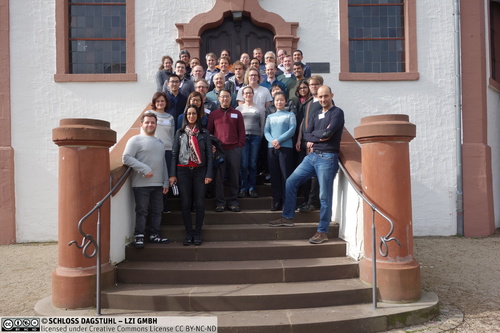
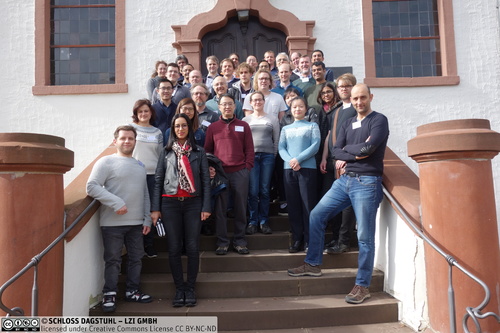
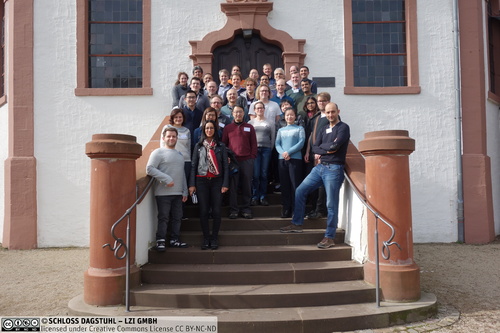
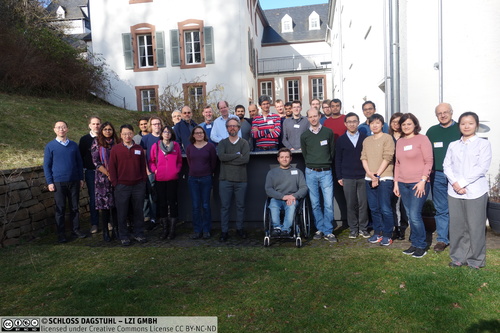
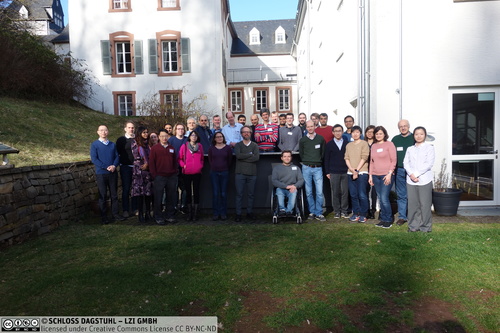
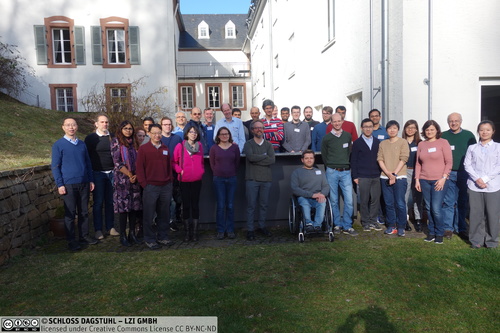
 Creative Commons BY 3.0 DE
Creative Commons BY 3.0 DE
